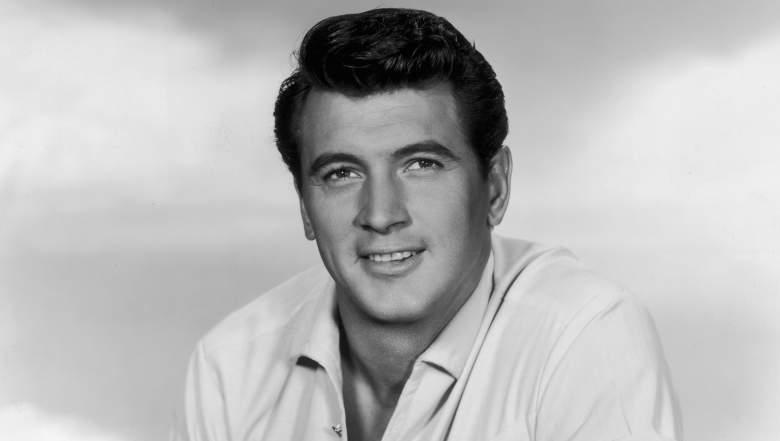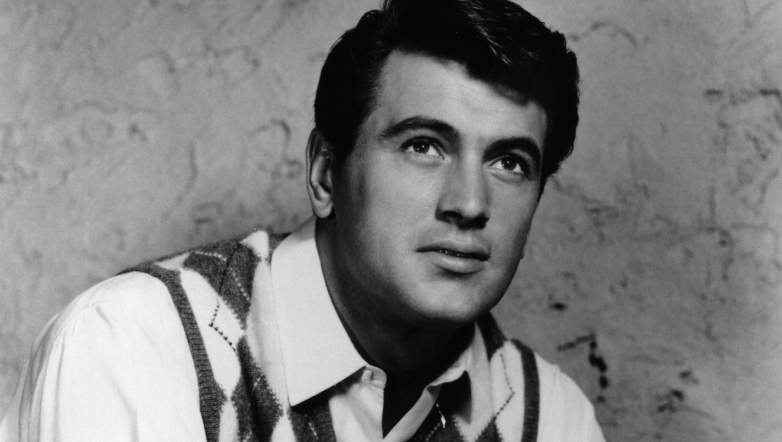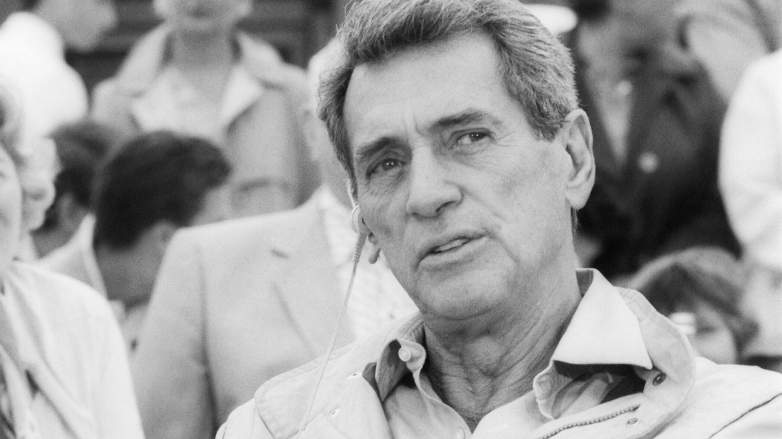
Getty Images
Rock Hudson (real name Roy Scherer Fitzgerald) is a heavily featured character on Netflix’s new show Hollywood, which tells a fictional tale of a controversial movie being made during the Golden Age of cinema in post-World War II Tinseltown. While many of the characters are fictional people (or fictionalized versions of real people), Rock Hudson was absolutely a real person.
His story is changed a bit for Hollywood, but the limited series generally sticks to the facts about how Fitzgerald got his start in show business and became the huge star known as Rock Hudson. Here is what you need to know about the rest of his career and how he died.
Warning: The first four headers are spoiler-free, but the fifth header contains some spoilers from Hollywood on Netflix.
1. Roy Harold Scherer Fitzgerald Grew Up in Winnetka, Illinois
Roy Harold Scherer Jr. was born on November 17, 1925, in Winnetka, Illinois, the only son of Katherine Wood Scherer and Roy Harold Scherer Sr. But they divorced when Fitzgerald was just four years old and Roy Sr. abandoned the family, according to Hudson’s New York Times obituary.
When his mother remarried in 1932, Hudson’s stepfather Wallace Fitzgerald legally adopted him and his name became Roy Fitzgerald, which is the name he is using when viewers meet him on the Netflix show. As a child, the New York Times reports that he was rather reclusive and shy. He did try to act in school plays but struggled to remember his lines, a problem he carried with him to Hollywood.
2. He Was in the Navy in World War II

Getty Images
After graduating from New Trier High School in 1943, he enlisted in the United States Navy and served on the SS Lew Wallace liberty ship as an aircraft mechanic in the Philippines during World War II. Following his discharge from the service, he moved to Los Angeles to live with his biological father.
There, Hudson worked as a vacuum cleaner salesman and a truck driver, but what he really wanted to do was act. So he bought a suit and started waiting outside the different movie studio gates.
As absurd as that may sound, it’s exactly what hundreds of other hopefuls did in the 1940s trying to get discovered. Starting in the early 1920s, the best way to get work as extras or background actors was to wait outside the studio gates in the hopes that a casting director would see you and hire you on the spot, according to Central Casting.
But that never worked for Hudson. He didn’t get his big break until he sent his headshot to agent Henry Willson.
3. Henry Willson Changed Fitzgerald’s Name and Launched His Career
Willson saw something in the young wannabe actor, so he changed his name to Rock Hudson and got him a small part in the film Fighter Squadron, where he took 38 takes to deliver his only line, according to Robert Hofler’s book The Man Who Invented Rock Hudson: The Pretty Boys and Dirty Deals of Henry Willson.
But after acting, singing and dancing lessons, plus some photogenic spreads in magazines, Hudson began getting more roles. He appeared in Peggy, Winchester ’73, Tomahawk, Air Cadet and Bend of the River, but his big breakthrough role came in the 1952 picture Scarlet Angel opposite Yvonne de Carlo; he also starred opposite her in the 1953 adventure Sea Devils.
Then in 1954, Hudson co-starred with Jane Wyman in Magnificent Obsession, which landed him firmly in leading-man territory. That film led to him starring opposite Elizabeth Taylor and James Dean in Giant, which is the role for which Hudson earned his only Academy Award nomination. That led to several big movies in the late 1950s and early 1960s, but Hudson started to decline at the box office by roughly 1965.
In the ’70s and ’80s, he appeared on TV in various roles, including a starring part on McMillan & Wife with Susan Saint James. He also played a memorable role on Dynasty, that of the biological father of Heather Locklear’s Sammy Jo Carrington.
4. Willson Worked Hard to Keep Hudson’s Homosexuality Quiet

Getty Images
Willson was gay and so was Hudson, and at that time, nobody could really be open about their homosexuality. So Willson worked hard to keep the sexual orientation of his clients out of the papers, including that of Hudson. In 1955, Confidential magazine threatened to out Hudson, so Willson fed them information about Rory Calhoun and Tab Hunter’s various run-ins with the law to quash the Hudson story.
After that, Willson made Hudson marry his secretary, Phyllis Gates. According to Gates’ 2006 obituary in The Guardian, she wrote in her book “My Husband, Rock Hudson” that she never knew he was gay. She said the marriage was good at first, but Hudson then began to go out a lot at night and she didn’t understand why. One night, he got violent with her during an argument and she filed for divorce in 1958.
However, Hofler, the author of the Willson biography, told The Advocate in 2006 that Gates was actually a closeted lesbian who knew Hudson was gay. He said that Mark Miller, a close friend of Hudson’s who worked as his personal secretary in the 1970s and 1980s, told him that Gates and Hudson had an understanding — but Gates’ double-standard got in the way.
“Phyllis had a double standard,” Miller says of the marriage, meaning that “she could go out with women, but Hudson couldn’t make it with men. Always the pragmatist, Phyllis feared that Hudson’s homosexuality would be exposed and, in effect, derail her gravy train as Mrs. Star,” wrote Hofler.
5. Hudson’s Death
In 1984, Hudson was diagnosed with HIV. He kept his illness a secret, but in 1985, he held a press conference with Doris Day to announce her return to TV on Doris Day’s Best Friends. But his appearance was so sickly that it sparked intense media speculation about his health.
Jeanne Wolf, who was working for Entertainment Tonight at the time, told Entertainment Weekly in 1997 that “everyone was speechless” when they saw Hudson looking so frail and ashen. After weeks of speculation, Hudson caved to the pressure to disclose his illness. On July 25, his spokesperson announced that he had AIDS. He died two months later.
Hudson became the first high-profile person to reveal such a diagnosis and mostly, the response was positive. His friend and former co-star Elizabeth Taylor helped launch the American Foundation for AIDS Research and Wolf told EW that she spoke with an AIDS support group that said Hudson’s disclosure changed everything for them.
On Hollywood, Hudson’s life goes a bit differently. When fictional movie Meg is nominated for several Oscars, Hudson attends the Academy Award ceremony on the arm of screenwriter Archie Campbell, a gay African-American writer who is nominated for the Meg screenplay. When Campbell wins, he kisses Hudson in front of the entire auditorium.
One year later, Willson approaches Hudson and apologizes to him for his behavior, like extorting Hudson for sex and treating him like a piece of meat. He then asks if Hudson would star in his new movie called “Dreamland,” which will be the first romantic movie about two men.
Hollywood season one is available now on Netflix.
READ NEXT: Hollywood Finale Spoilers: Is Season 2 Renewal Coming?